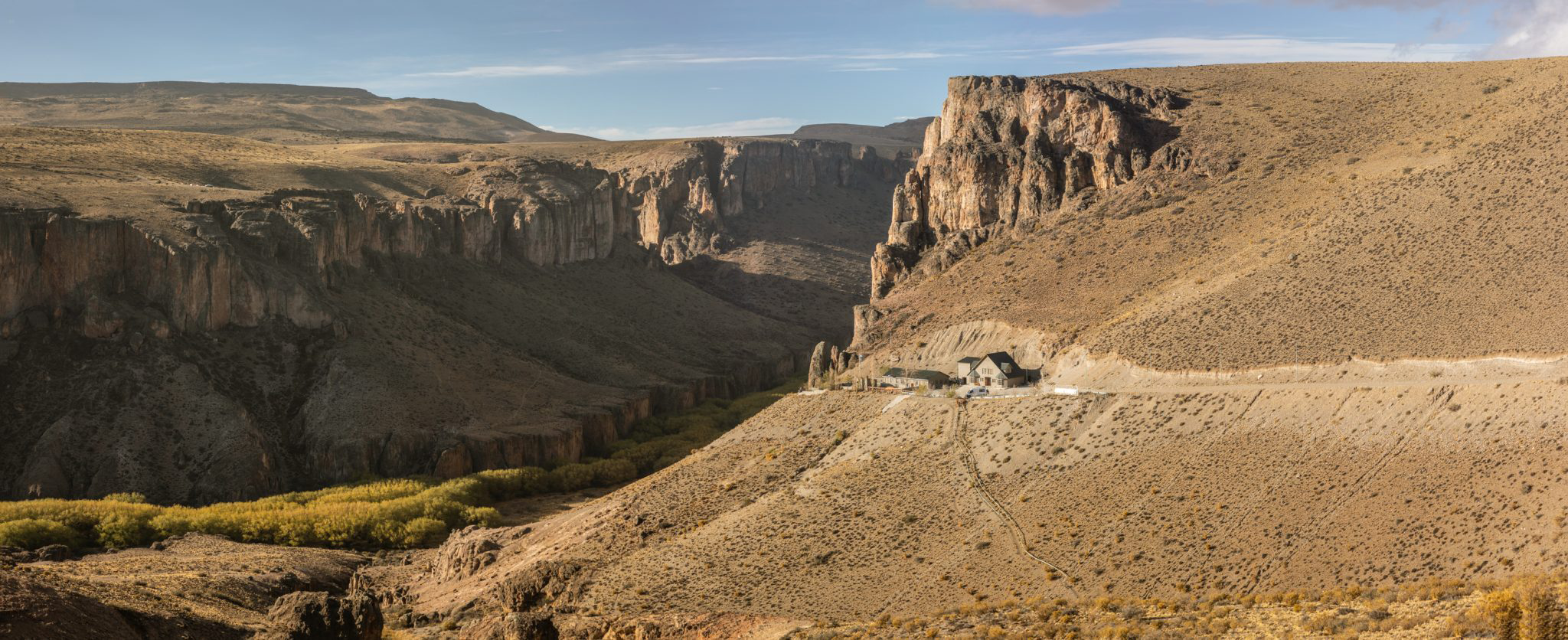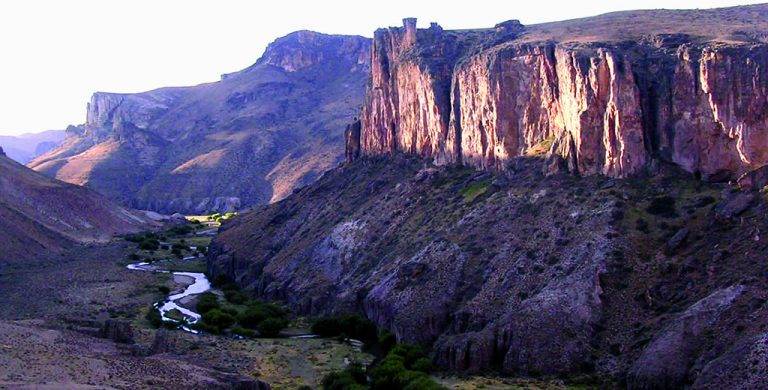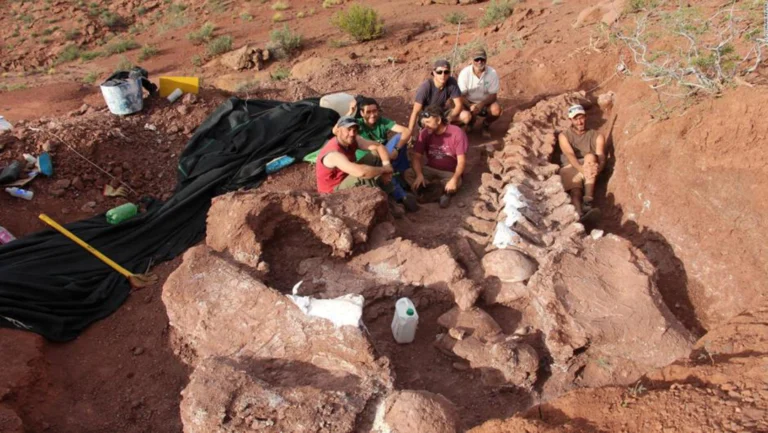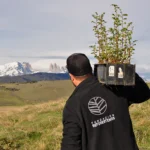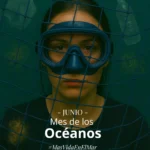Visitors to Cueva de Las Manos can fully appreciate its rock art more than 9,000 years old and experience a journey into the past that is completed with the renovation of the traditional and first access to the site: the pedestrian path “Bajada de Los Toldos”, from the Portal Cañadon Pinturas.
Located in the imposing Cañadón del Río Pinturas, the Cueva de las Manos Provincial Park, a UNESCO World Heritage Site, shelters cave paintings more than 9,000 years old, which give evidence of the cultural transcendence and nature of the northwestern region of Santa Cruz. An archaeological treasure of the first hunter-gatherer settlers of the area, which shows how they lived and their relationship with nature.
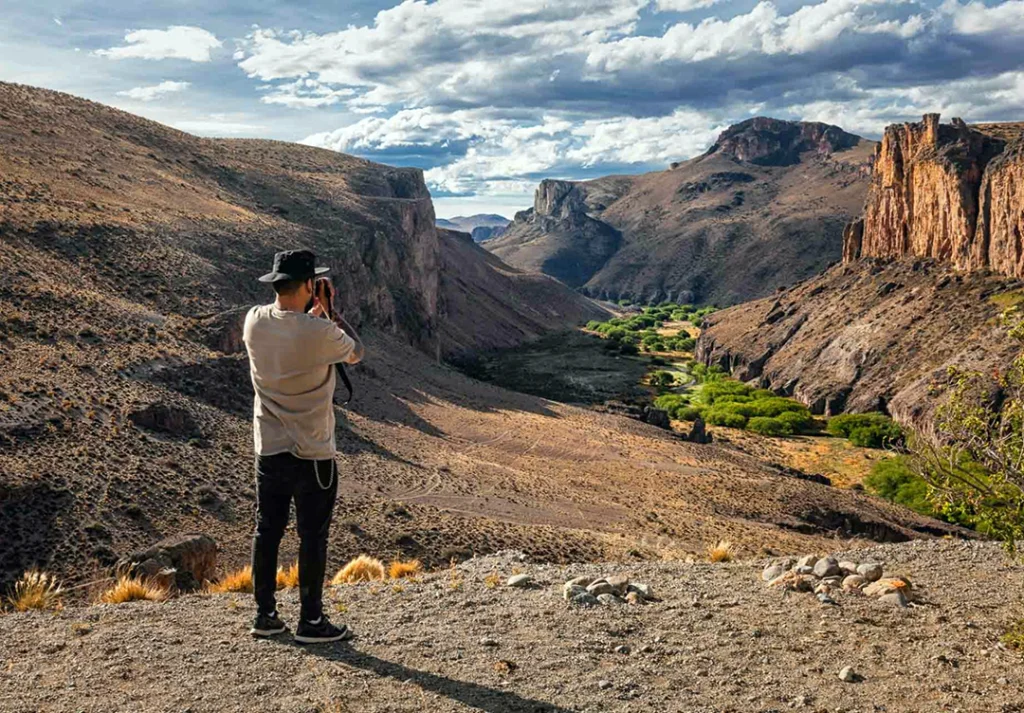
However, some 2 meter high fences, placed for their protection due to several acts of vandalism occurred in the past, interfered with the visibility of the paintings and generated in the visitor the impotence of being able to enjoy them in all their magnitude.
Today, the fences were replaced by a 90 cm high railing, which allows you to enjoy the visit with an experience of greater intimacy, which hand in hand with the story told by the experienced guides transported to the past with the detail of the customs of the ancient hunters gatherers who inhabited the area.
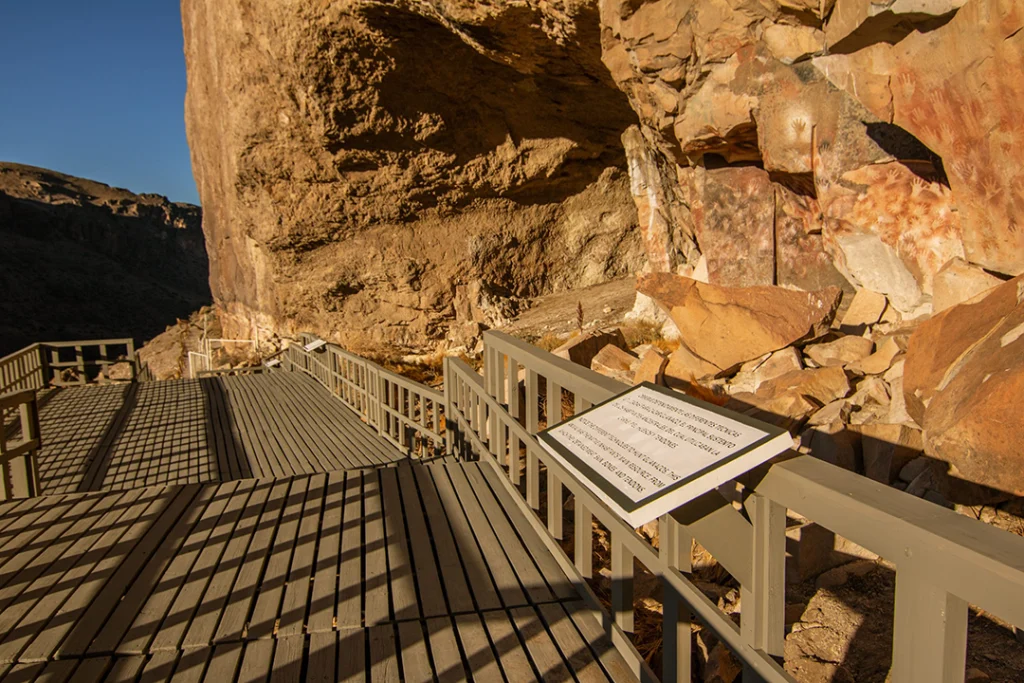
The renovated Bajada de los Toldos trail, a traditional pedestrian access that leads to the Cueva de las Manos and is an alternative to vehicular routes, is now a walk to enjoy. Its steep descent has been improved with gentler slopes that allow you to enjoy the hike and the breathtaking panoramic views of the canyon. In the steepest spots, newly released steps complement this self-guided tour that leads up to the cave in a 45-minute walk.
And to fully experience the visit to the Cueva de las Manos site, nothing better than to complement it with the extensive network of trails of the Portal Cañadón Pinturas, touring the balconies of the Cañadón del Río Pinturas with incredible views from its 300 m high walls and the possibility of spotting orange chinchillas in its crevices, hiking the La Guanaca trail to the top of Cerro Amarillo, watching condors fly over the endless Patagonian skies and, on a sunny day, seeing the emblematic Cerro San Lorenzo on the horizon. Walking along the Koi trail, visitors will come across herds of guanacos that, alerted by the male, are moving swiftly away across the steppe. On the way to Tierra de Colores, groups of rheas can be seen running around shaking their plumage, and the lucky ones may spot a puma, the top predator of this ecosystem.
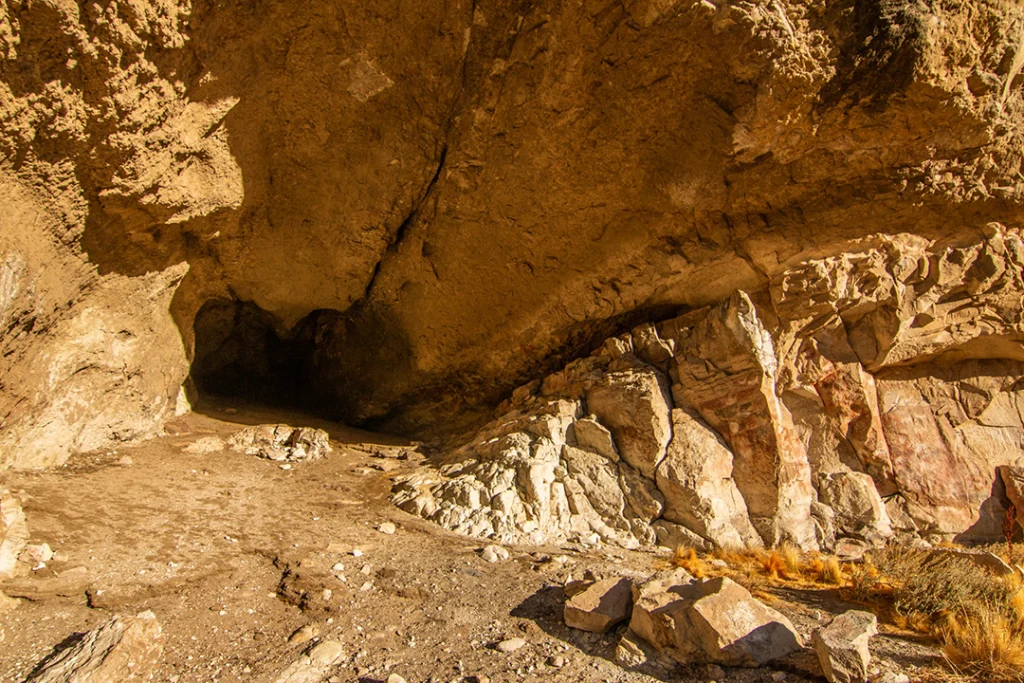
Since the creation of the Cueva de las Manos Provincial Park, adequate management has been ensured for the conservation of the site and its public access – through the promotion of careful and quality visitation – and the development of a regional tourist destination thanks to the annual permanence of guides and caretakers and the organization of guided tours, essential for understanding and interpreting the paintings.
It arouses great interest in the beauty of the cave paintings, as well as in its great antiquity, since the oldest inscriptions are dated 7350 B.C. being one of the oldest artistic expressions of South American peoples, which is why it was declared a National Historic Monument and declared a World Heritage Site by Unesco.
While in its interior were also found traces of lithic materials, hearths with remains, bones and animal skins that were the basis of the subsistence of hunter-gatherers, in this archaeological site highlights the complexity of Paleolithic art, which allows us to understand how those societies lived in the past.
As mentioned above, the Cueva de las Manos is located 88 meters above sea level, in the Estancia Cueva de las Manos, between the towns of Perito Moreno and Bajo Caracoles, in the department of Lago Buenos Aires. The cave is 20 meters deep, 10 meters high and 15 meters wide. These works of art were discovered for the western culture in 1876 by Francisco P. Moreno.
The cave art
The main cave is carved by erosion into the high walls that accompany the upper Pinturas River valley in northwestern Santa Cruz province, and south of the town of Perito Moreno. The cave has several overhangs, and presents in its interior cave paintings made during an extensive period ranging from 9300 BP to 1300 BP.7 They are the earliest known artistic manifestations of South American peoples.
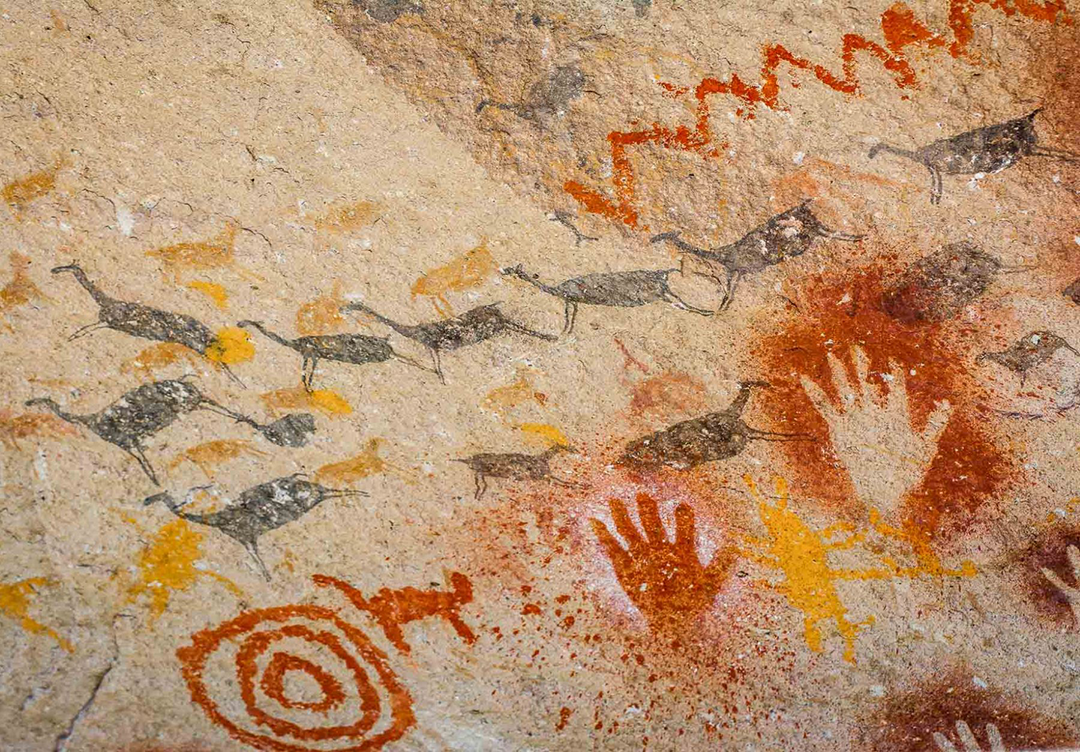
The ‘cave’cueva de las manos’ has several overhangs, and presents in its interior cave paintings made during an extensive period ranging from 9300 BP to 1300 BP.7 They are the earliest known artistic manifestations of South American peoples.
In such paintings one can observe figures that reproduce elements related to the daily life of the Tehuelche and their ancestors, ancient hunter-gatherer peoples.8 Of all of them, the most famous and oldest are the silhouettes in positive and negative of hands (829 have been counted), in some cases superimposed. Such silhouettes were made by ancient airbrushing methods (the chromatic material was applied in the form of an aerosol blown through the medullary hollows of small animal bones).
Silhouettes in positive and negative were made by ancient airbrushing methods.
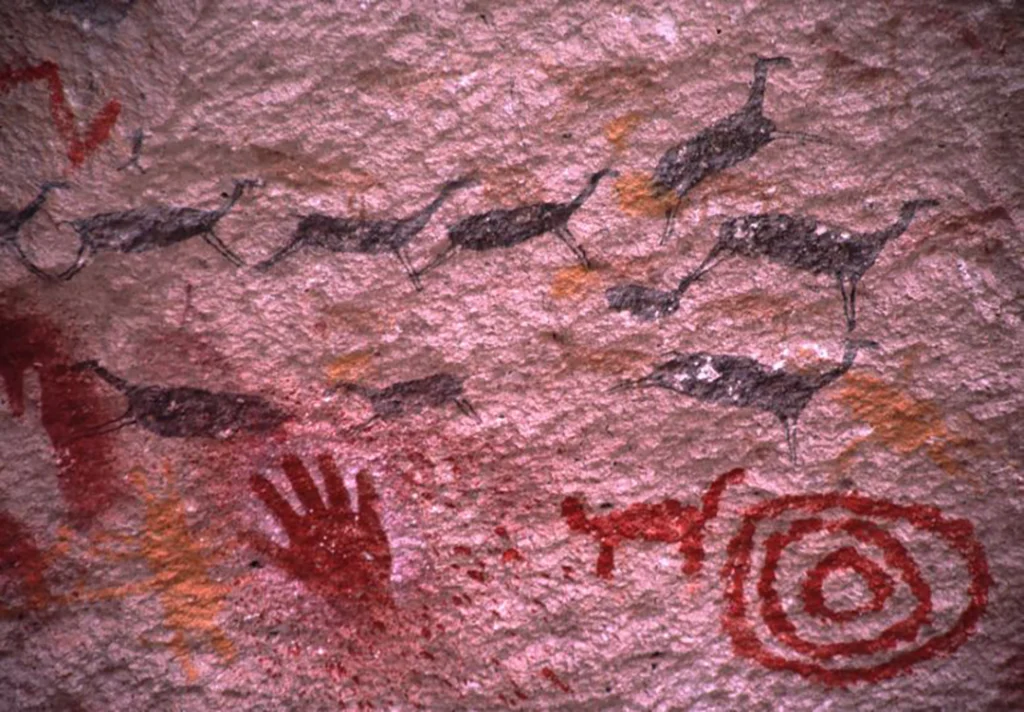
They can be seen silhouetted against the rock of animals such as guanacos and choiques, piches and matuastos can be observed. It is believed that they were the main components of the diet of the ancient peoples and therefore scenes of the collective hunting of these animals were frequently depicted.
They were the main components of the diet of the ancient peoples and therefore scenes of the collective hunting of these animals were frequently depicted.
As for the representation of the human figure, this is also found although less frequently and with linear forms. The dominant range of colors is the one that involves red, ocher, yellow, white and black. They were made with fruits, plants and ground rocks. The blood of hunted animals and their fat was also used as a binder.
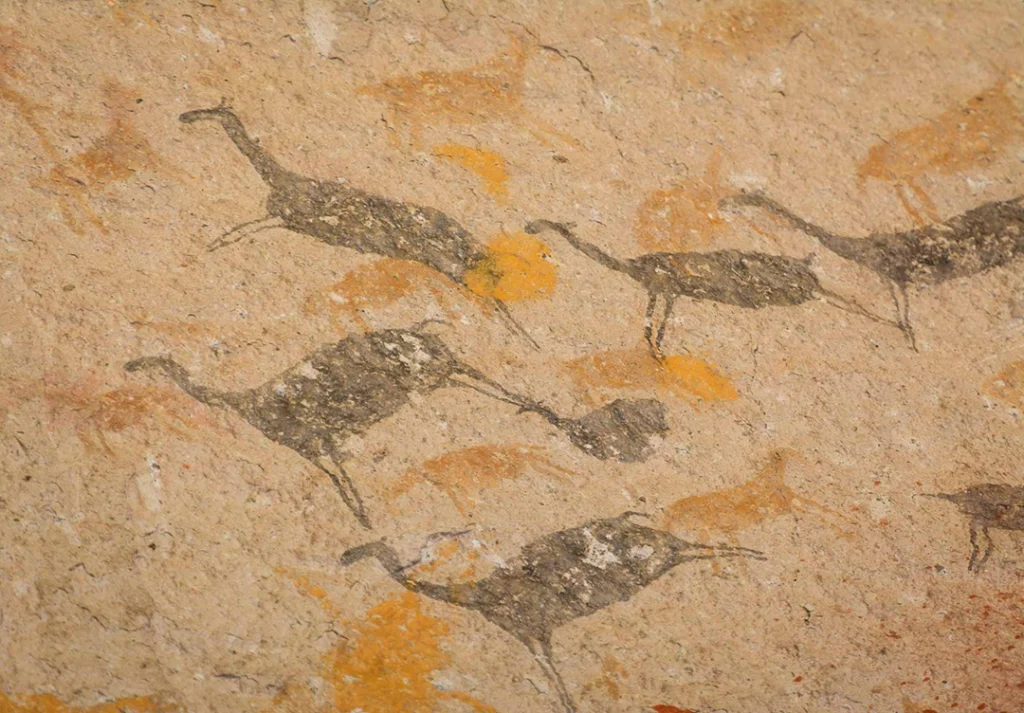
The meaning of the representations
It is really hard to say for sure, although it is speculated that it would be part of a ritual, it is possible that, as part of a ceremony, they painted the caves with their hands leaving a record of their presence in the act. It is interesting to note that most of the painted or traced hands are left hands and that there are positive hand impressions (i.e., achieved by resting on the walls of the palm of the hands dyed with paint).
The themes are in response to the theme of the caves.The themes respond to three distinct periods; the earliest – and less abstract – is rich in hunting scenes; in the intermediate period the hands stand out, accompanied secondarily by the representation of isolated animals; in the last period the predominant theme is that of geometric motifs, lines, dots and mandalas of which their meaning is unknown. During the third period (3300 to 1500 B.C.), the abandonment of the naturalistic realism of the beginnings is accentuated and -together with the infallible stencilled hands- appear men and guanacos of schematic treatment, tracks of ñandú and fantastic beings, mixture of saurian and human. Later, with the direct ancestors of the Tehuelches, abstraction triumphs definitively and the hollows of the Alto Río Pinturas are filled with triangles opposed by the vertex, concentric circles, dotted lines and zigzags of an intense red.
Renovation and Expansion of Trails in Patagonia Park for an Unforgettable Natural Experience
How to get there
To access ‘Cueva de las Manos’ you can use Route 40 and first visit the Interpretation Center, whose museological script was created by specialists from the National Institute of Anthropology and Latin American Thought (INAPL). It offers an overview of the way of life of the native populations, the environmental characteristics and the history of the first explorers.
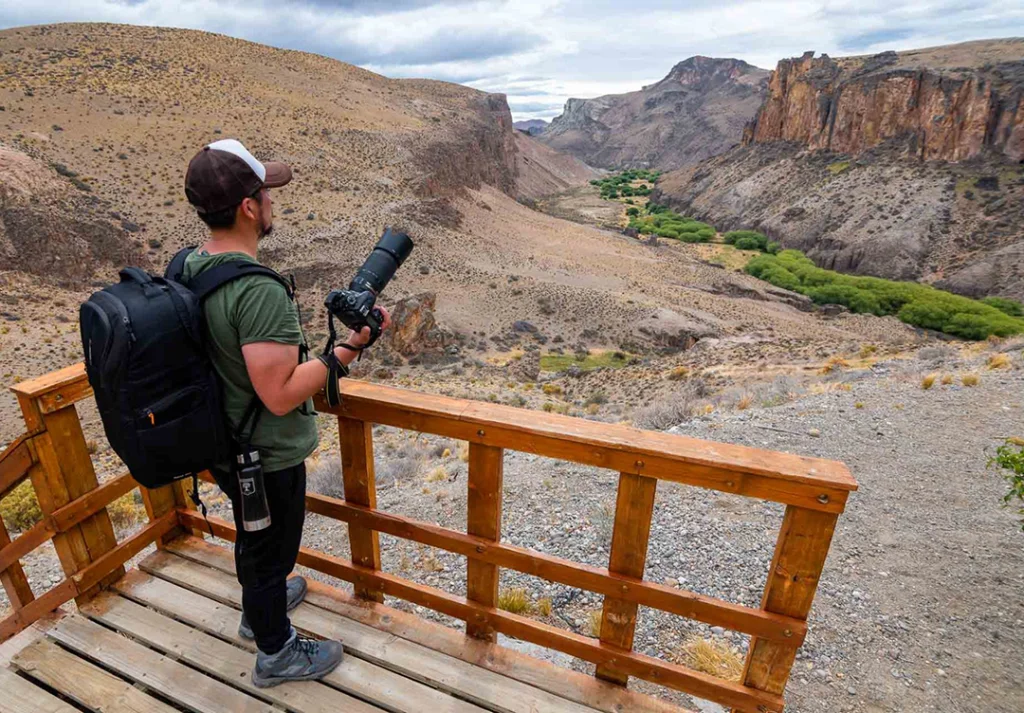
In addition, you can see an archaeological excavation and learn about rock art techniques. The Center allows those who visit the site and for some reason cannot walk the long circuit between rocks, access to the knowledge of the place. Another point of this trip to the past is to visit the Museum of Archaeology “Carlos J. Gradin” in the town of Perito Moreno, named after one of the first researchers of the Cueva de las Manos. Gradin dedicated more than thirty years to the search for answers, with the financial support of CONICET and the technical support of archaeologists Ana M. Aguerre and Carlos A. Aschero. Thanks to this effort -which involved both pictographic surveys and excavations- we now know that an uninterrupted cultural sequence of more than eight and a half millennia is represented in the Cueva de las Manos. For the ancient guanaco hunters it was much more than a circumstantial refuge, it was a sacred space.
The hands were not painted on the rock but stenciled on the stone. This means that those ancient inhabitants rested the palm of their hand on the ceiling or wall of the cave and then covered it with paint.
In conclusion
Cueva de las Manos is much more than an archaeological site — it’s a window into the past that connects visitors with the deepest roots of art and culture in Patagonia. Declared a UNESCO World Heritage Site, this natural and cultural gem captivates with its landscapes, history, and symbolic value. For those wishing to explore it, there are accommodation options in the nearby towns of Perito Moreno and Los Antiguos. Additionally, the Cañadón Pinturas Gateway offers three campgrounds and a guesthouse, providing comfortable alternatives for a complete experience in this unique corner of Argentina.

